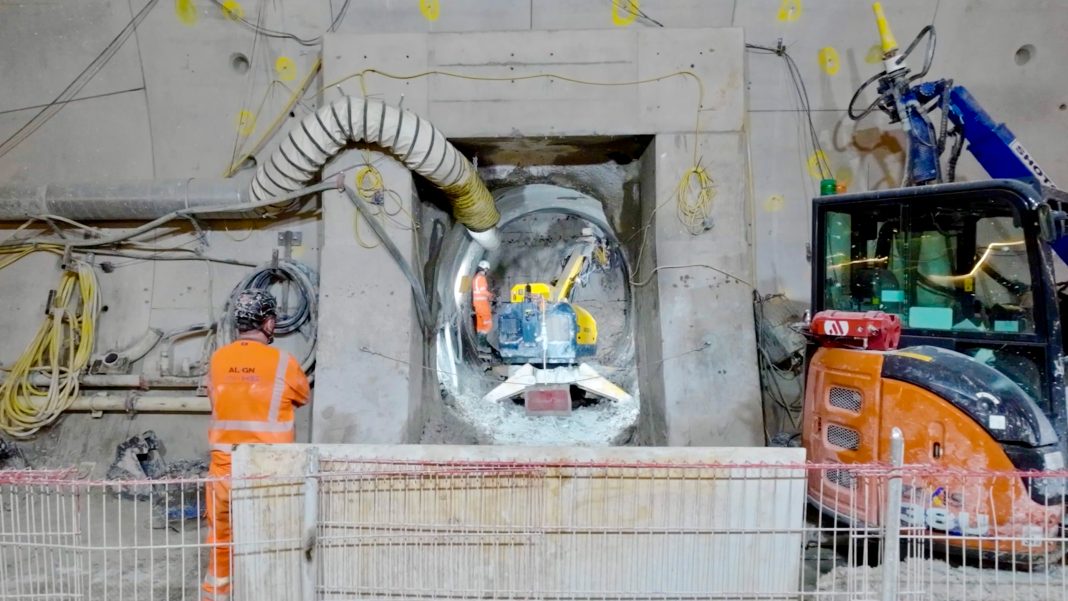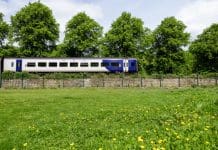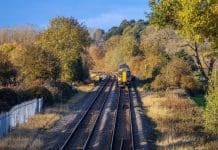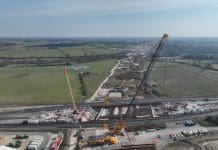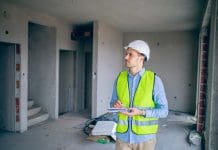HS2 has completed the first tunnel cross passages that will form part of thirty-eight underground connections between the northbound and southbound tunnels
The first tunnel cross passages in HS2’s Chiltern works have been completed as two giant tunnelling machines, named Florence and Cecilia, reach almost halfway in their 10-mile journey.
The Chiltern tunnels will carry high speed trains between London and the North at speeds of up to 200mph (320km/h). The trains will travel through two parallel tunnels linked by short passages for use in emergencies.
The process behind the tunnel cross passages
Delivered by HS2’s main works contractor, Align – a joint venture formed of Bouygues Travaux Publics, Sir Robert McAlpine, and VolkerFitzpatrick – each passage is between 15 and 20 metres in length.
The mining team used a remotely controlled excavator to break out of and excavate from one running tunnel to the adjacent tunnel. As the excavation is progressed, the ground was supported using a sprayed concrete lining (SCL).
A water-proof membrane was then installed in the SCL-lined tunnel, followed by a secondary concrete lining constructed by placing concrete behind formwork installed in the cross passage.
The tunnels will be constructed with rigorous safety precautions in place
Once the passageway is complete, the safety doors- manufactured by Booth Industries– can be installed at either end.
The sliding doors have been subjected to rigorous fire and fatigue testing to take account of the train speeds, associated pressures and frequency of the trains.
Each running tunnel has an emergency walkway that allows passengers to safely evacuate the train and walk through the cross passages into the other tunnel where they can be rescued on a passenger train.
Access for emergency services is from either the portal or one of the five ventilation/emergency access shafts.
Martyn Noak, HS2 Ltd’s head of Tunnel Engineering, said:
“While invisible to the travelling public, the cross passages have a key role in providing a safe operational railway. In an emergency they allow the safe evacuation of passengers into a place of relative safety – the other tunnel.
“Constructing cross passages is different than using a tunnelling machine as the ground is excavated in short lengths with each advance being left unsupported for a short period of time until the sprayed concrete lining is installed. It is a different set of risks and a specific skilled workforce is needed.”


